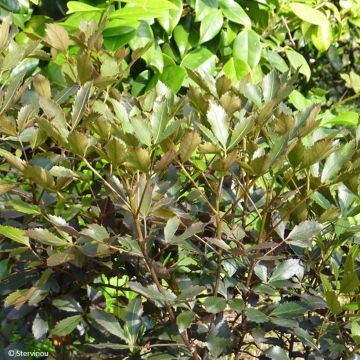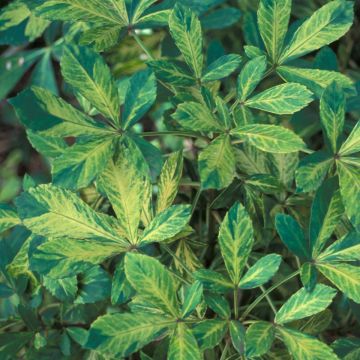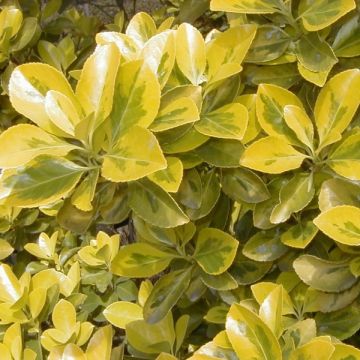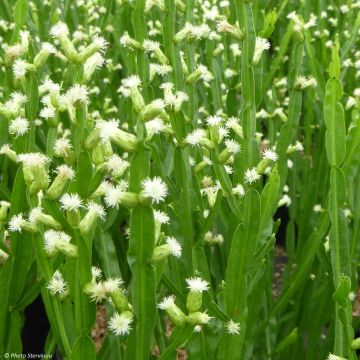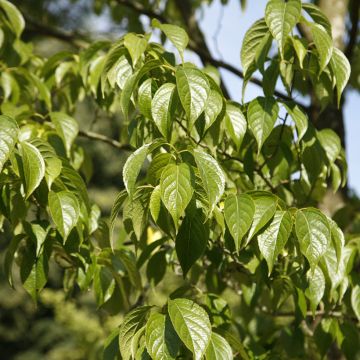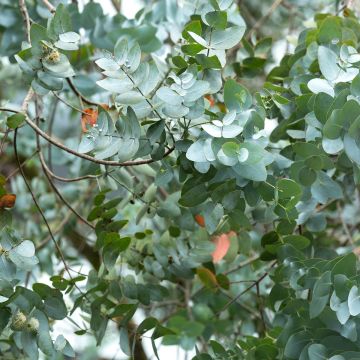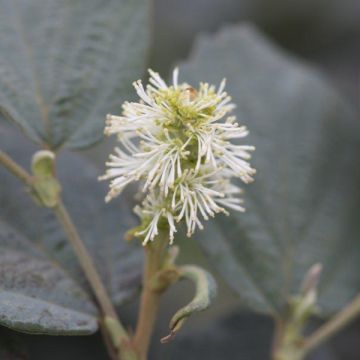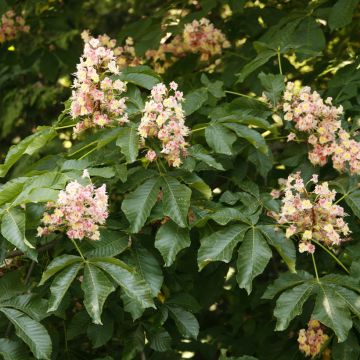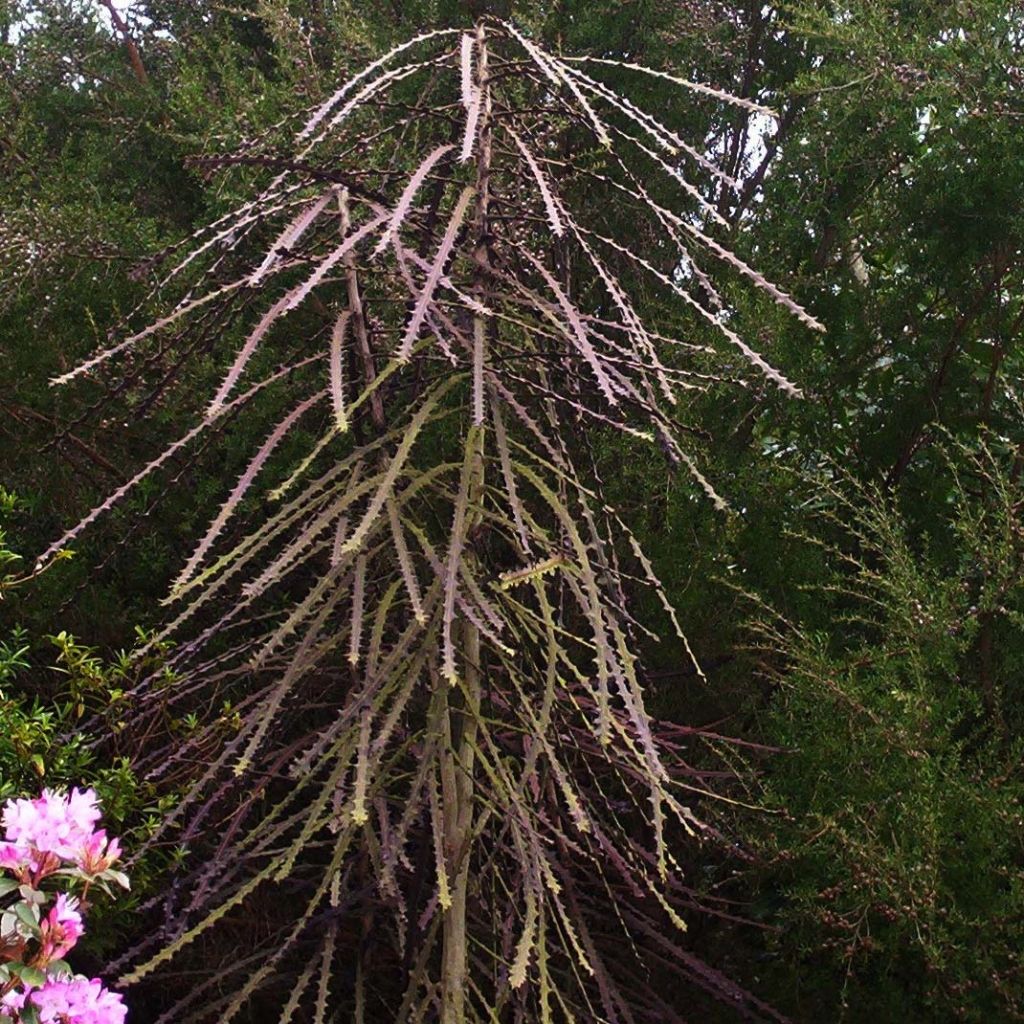

Pseudopanax ferox


Pseudopanax ferox
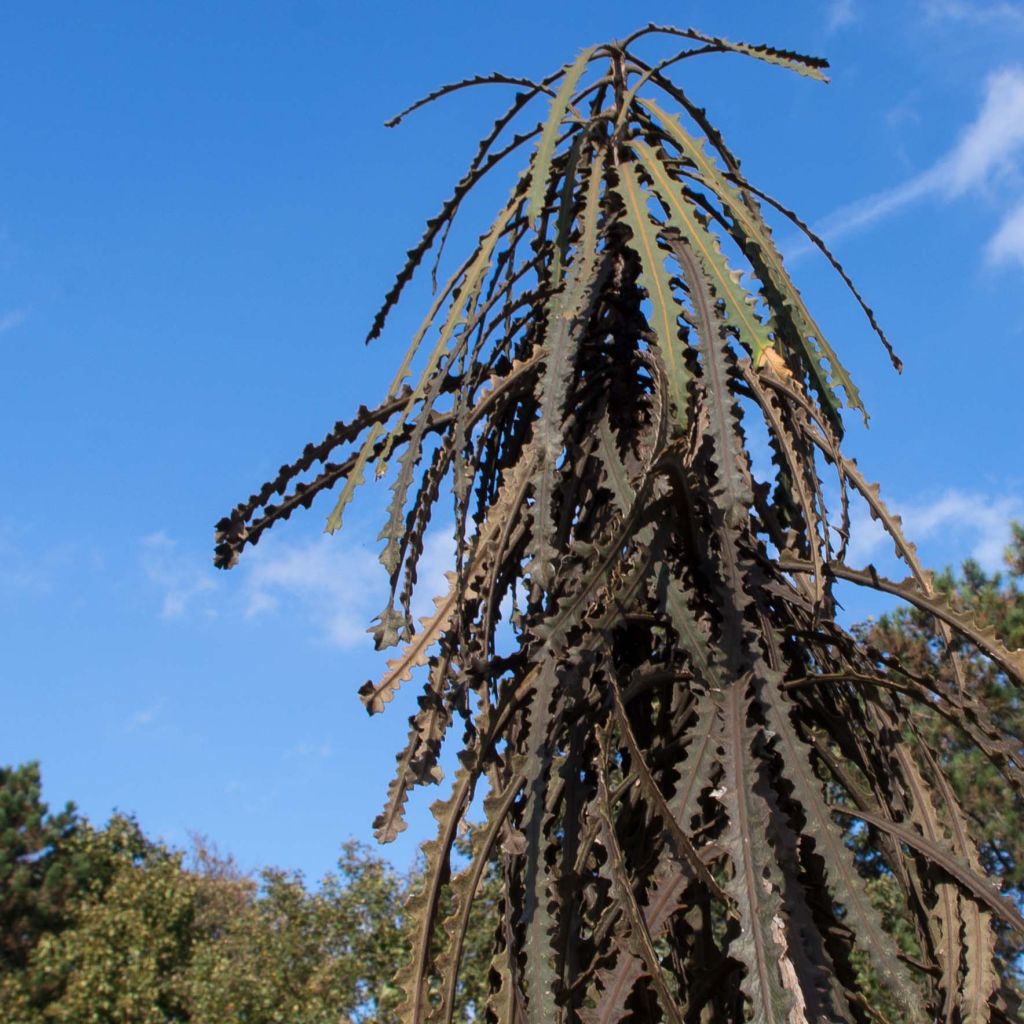

Pseudopanax ferox
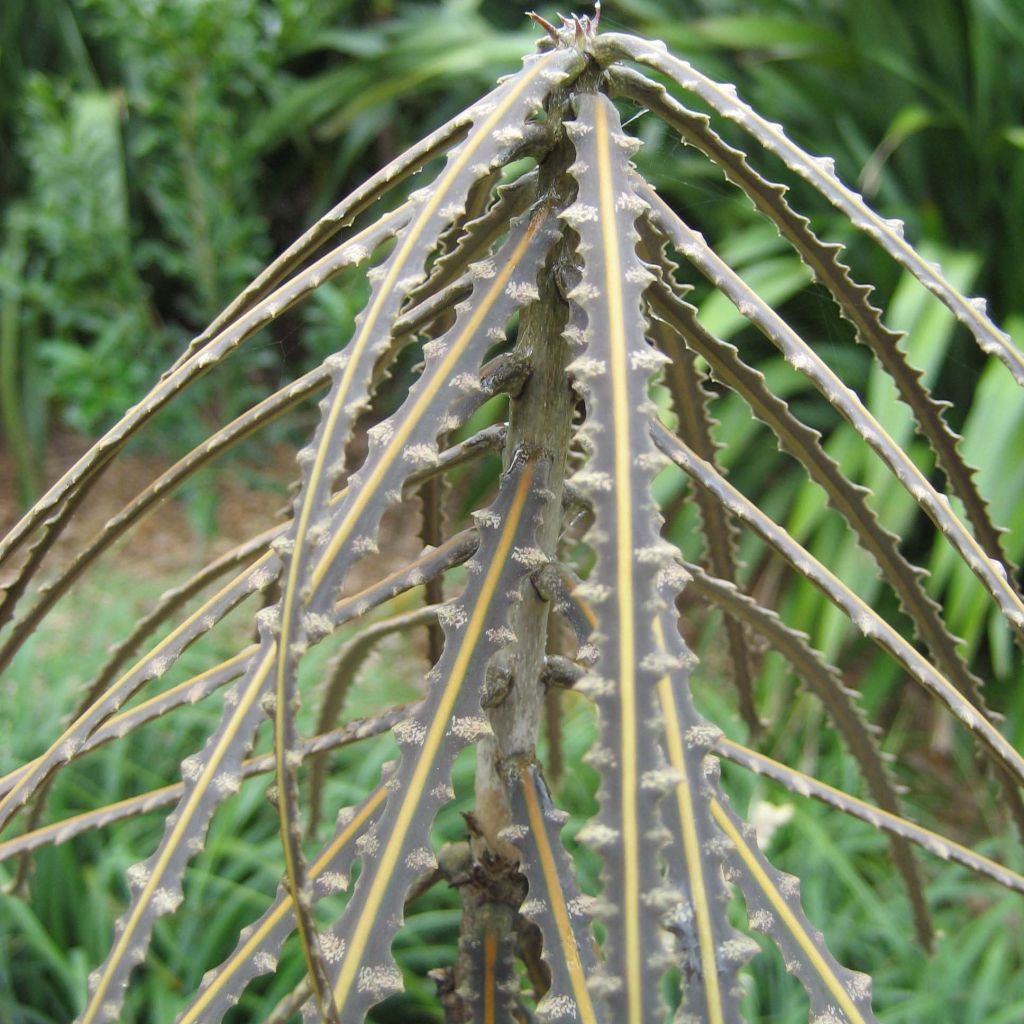

Pseudopanax ferox
Pseudopanax ferox
Pseudopanax ferox
Toothed Lancewood, Horoeka
I am absolutely delighted with the young plant that I received, even more beautiful than the photo of 'the plant as you will receive it'. It is absolutely spectacular and I highly recommend it to all enthusiasts of 'beautiful botanical monsters'.
isabelle, 12/01/2020
This item cannot be shipped to the selected country
Delivery charge from €5.90
More information
Schedule delivery date,
and select date in basket
This plant carries a 24 months recovery warranty
More information
We guarantee the quality of our plants for a full growing cycle, and will replace at our expense any plant that fails to recover under normal climatic and planting conditions.
From €5.90 for pickup delivery and €6.90 for home delivery
Express home delivery from €8.90.
Does this plant fit my garden?
Set up your Plantfit profile →
Description
Pseudopanax ferox is a rather unusual New Zealand shrub that will delight lovers of rare exotic plants. This strange species goes through three successive stages to obtain its definitive foliage. The juvenile leaves are thin, rigid, brownish-grey and edged with teeth on both sides like a double-toothed saw blade, while the adult leaves, carried in a crown on a slender trunk, are shorter, wider, rounded, with smooth edges. Strange and graphic, it deserves a prime spot in an ericaceous bed, in mild climates. Gardeners in colder regions can offer it a prominent place on the terrace during the summer and protect it from severe frosts in winter.
Pseudopanax ferox belongs to the Araliaceae family, just like the Japanese angelica tree. It is native to New Zealand, specifically the low-altitude forests that cover some coastal valleys. Threatened in its natural habitat, it has become rare there, just as it is quite rare in cultivation. It is a shrub that prefers humus-rich, fertile, and rather acidic soil, and oceanic climates, mild and humid. It can reach a height of 8 m (26ft), but takes up little space on the ground: at maturity, its crown will not occupy more than 1.50 m (5ft) in width. Its growth is quite fast. Young plants grow on a single trunk, bearing spectacular juvenile leaves, oriented towards the ground, 45 cm (18in) long, inserted at an angle of less than 45 °C. They are thick, rigid, grey-green tinged with brown, edged with rounded teeth and crossed by a light green central vein. Over time, this shrub becomes bare at the base and develops a spreading crown at the top of its trunk, bearing adult leaves. They measure 15 cm (6in) long, are lanceolate in shape, and dark green in color. The mature plant produces umbels 10 cm (4in) wide, with clusters of green flowers. In this Pseudopanax, there are male and female individuals. Only the female plants will bear small black ovoid fruits after pollination.
Cultivated most often for the strange beauty of its juvenile leaves, Pseudopanax ferox is an almost fossil-like plant, fascinating, a survivor from ancient forests. It is appreciated for its otherworldly design, which, let's admit, is quite difficult to integrate into a classical garden. However, this shrub has its rightful place in a large exotic bed, in the company of tree ferns (Dicksonia), Cycas, Araucaria (in a large garden), or horsetails, for example. Hardy to -7 °C, it requires a lime-poor, humus-rich, well-drained soil and a sheltered exposure from cold and dry winds in mild climates. It is also a beautiful collector's plant that can be cultivated in a large pot, to be sheltered in a conservatory or greenhouse during the winter.
Report an error about the product description
Pseudopanax ferox in pictures
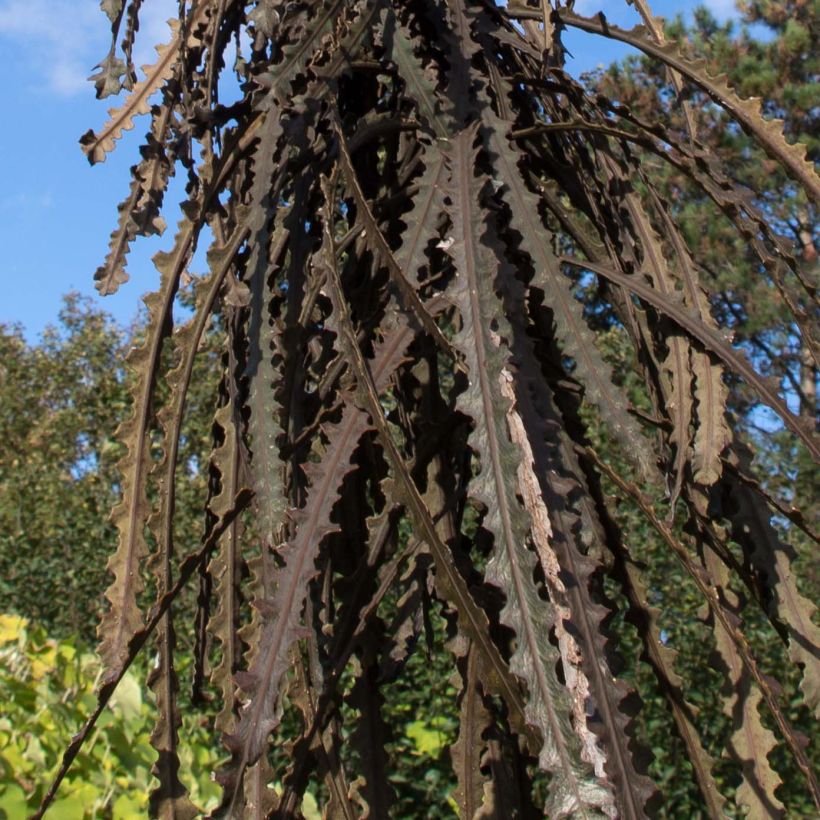

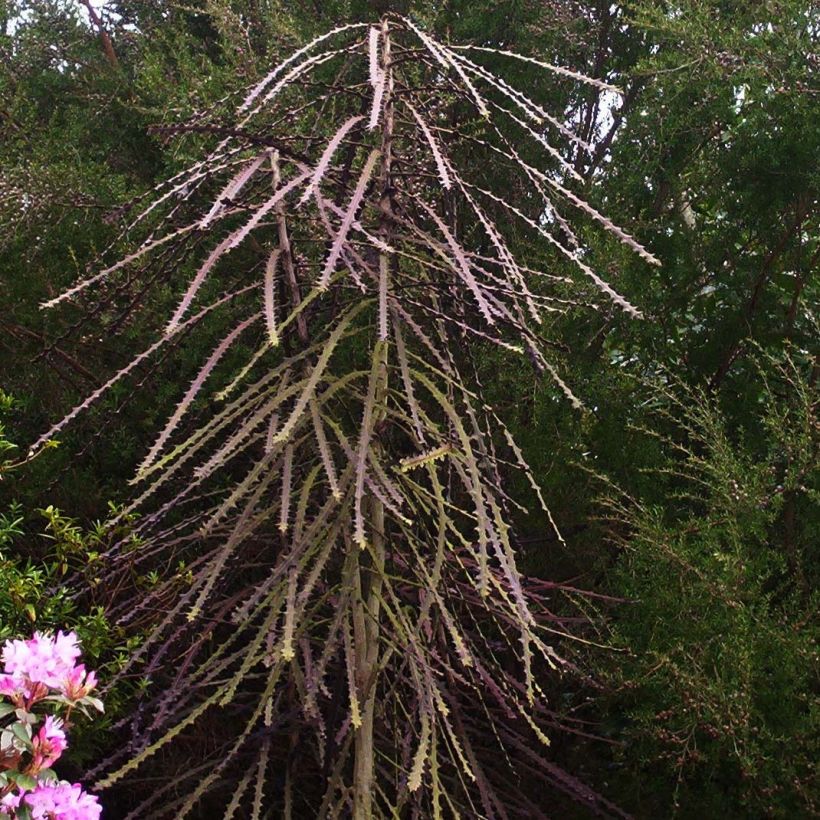

Plant habit
Flowering
Foliage
Botanical data
Pseudopanax
ferox
Araliaceae
Toothed Lancewood, Horoeka
Oceania
Other Pseudopanax
Planting and care
Pseudopanax is cultivated in the open ground in mild climates, particularly on the oceanic facade, where well-drained, lime-poor soils and cool, humid summers are perfectly suited to its requirements. Elsewhere, it is best planted in a large pot filled with leaf compost, ensuring drainage at the bottom, and watered with soft to medium hard water. It prefers a semi-shaded position or morning sun. Care must be taken to protect it from strong or drying winds to preserve its strange but highly ornamental foliage.
Planting period
Intended location
Care
-
, onOrder confirmed
Reply from on Promesse de fleurs
Striking foliage shrubs
Haven't found what you were looking for?
Hardiness is the lowest winter temperature a plant can endure without suffering serious damage or even dying. However, hardiness is affected by location (a sheltered area, such as a patio), protection (winter cover) and soil type (hardiness is improved by well-drained soil).

Photo Sharing Terms & Conditions
In order to encourage gardeners to interact and share their experiences, Promesse de fleurs offers various media enabling content to be uploaded onto its Site - in particular via the ‘Photo sharing’ module.
The User agrees to refrain from:
- Posting any content that is illegal, prejudicial, insulting, racist, inciteful to hatred, revisionist, contrary to public decency, that infringes on privacy or on the privacy rights of third parties, in particular the publicity rights of persons and goods, intellectual property rights, or the right to privacy.
- Submitting content on behalf of a third party;
- Impersonate the identity of a third party and/or publish any personal information about a third party;
In general, the User undertakes to refrain from any unethical behaviour.
All Content (in particular text, comments, files, images, photos, videos, creative works, etc.), which may be subject to property or intellectual property rights, image or other private rights, shall remain the property of the User, subject to the limited rights granted by the terms of the licence granted by Promesse de fleurs as stated below. Users are at liberty to publish or not to publish such Content on the Site, notably via the ‘Photo Sharing’ facility, and accept that this Content shall be made public and freely accessible, notably on the Internet.
Users further acknowledge, undertake to have ,and guarantee that they hold all necessary rights and permissions to publish such material on the Site, in particular with regard to the legislation in force pertaining to any privacy, property, intellectual property, image, or contractual rights, or rights of any other nature. By publishing such Content on the Site, Users acknowledge accepting full liability as publishers of the Content within the meaning of the law, and grant Promesse de fleurs, free of charge, an inclusive, worldwide licence for the said Content for the entire duration of its publication, including all reproduction, representation, up/downloading, displaying, performing, transmission, and storage rights.
Users also grant permission for their name to be linked to the Content and accept that this link may not always be made available.
By engaging in posting material, Users consent to their Content becoming automatically accessible on the Internet, in particular on other sites and/or blogs and/or web pages of the Promesse de fleurs site, including in particular social pages and the Promesse de fleurs catalogue.
Users may secure the removal of entrusted content free of charge by issuing a simple request via our contact form.
The flowering period indicated on our website applies to countries and regions located in USDA zone 8 (France, the United Kingdom, Ireland, the Netherlands, etc.)
It will vary according to where you live:
- In zones 9 to 10 (Italy, Spain, Greece, etc.), flowering will occur about 2 to 4 weeks earlier.
- In zones 6 to 7 (Germany, Poland, Slovenia, and lower mountainous regions), flowering will be delayed by 2 to 3 weeks.
- In zone 5 (Central Europe, Scandinavia), blooming will be delayed by 3 to 5 weeks.
In temperate climates, pruning of spring-flowering shrubs (forsythia, spireas, etc.) should be done just after flowering.
Pruning of summer-flowering shrubs (Indian Lilac, Perovskia, etc.) can be done in winter or spring.
In cold regions as well as with frost-sensitive plants, avoid pruning too early when severe frosts may still occur.
The planting period indicated on our website applies to countries and regions located in USDA zone 8 (France, United Kingdom, Ireland, Netherlands).
It will vary according to where you live:
- In Mediterranean zones (Marseille, Madrid, Milan, etc.), autumn and winter are the best planting periods.
- In continental zones (Strasbourg, Munich, Vienna, etc.), delay planting by 2 to 3 weeks in spring and bring it forward by 2 to 4 weeks in autumn.
- In mountainous regions (the Alps, Pyrenees, Carpathians, etc.), it is best to plant in late spring (May-June) or late summer (August-September).
The harvesting period indicated on our website applies to countries and regions in USDA zone 8 (France, England, Ireland, the Netherlands).
In colder areas (Scandinavia, Poland, Austria...) fruit and vegetable harvests are likely to be delayed by 3-4 weeks.
In warmer areas (Italy, Spain, Greece, etc.), harvesting will probably take place earlier, depending on weather conditions.
The sowing periods indicated on our website apply to countries and regions within USDA Zone 8 (France, UK, Ireland, Netherlands).
In colder areas (Scandinavia, Poland, Austria...), delay any outdoor sowing by 3-4 weeks, or sow under glass.
In warmer climes (Italy, Spain, Greece, etc.), bring outdoor sowing forward by a few weeks.




































